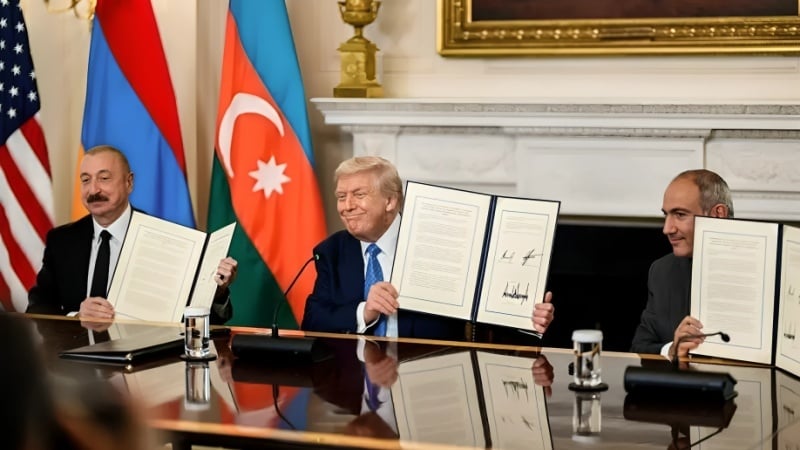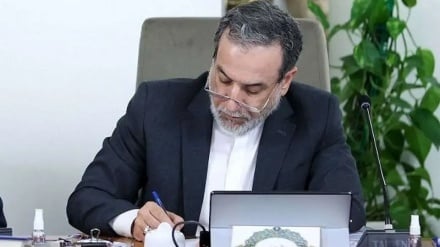Zangezur Corridor: A path to peace or a bridge for conspiracy?
-

Nikol Pashinyan, Donald Trump, and Ilham Aliyev
Pars Today – In recent weeks, news broke of an agreement between the Republic of Azerbaijan and Armenia, brokered at the White House, concerning the Zangezur Corridor.
Amid the geopolitical turmoil in West Asia in July-August 2025, the White House hosted the signing of a deal that appears peaceful on the surface but hides a deeper conspiracy.
According to Pars Today, citing IRNA, the Zangezur Corridor—also falsely branded as the "Trump Route"—is not just a simple transit passage, but rather a lever to redraw the power map in the South Caucasus.
This corridor, spanning approximately 43 kilometers in Armenia's Syunik province, is intended to connect Azerbaijan to Nakhchivan and form part of the "Middle Corridor" stretching from Central Asia to Europe. However, according to reports, the transfer of 99-year control of this route to an American-Armenian consortium raises alarm bells for the region. Beyond transportation, this project constitutes part of NATO and the Zionist regime's strategy to encircle Tehran, weaken Moscow, and contain Beijing.
From Karabakh to Zangezur: The roots of a crisis
The collapse of the Soviet Union in the 1990s ignited the Nagorno-Karabakh conflict. Armenia gained control of the region, while Iran, Russia, and the Minsk Group attempted mediation—to no avail, leaving the Caucasus in a years-long diplomatic stalemate.
The 2020 war, backed by overt Turkish military support, returned Karabakh to Azerbaijan. The November ceasefire agreement that year, which mentioned "unblocking transport routes," became the pretext for proposing the Zangezur Corridor.
Although Iran had generously facilitated access between Azerbaijan and Nakhchivan via the Aras transit route, Western pressure transformed this corridor into a tool to undermine Iran and Russia.
Containing Eurasia: The triple containment of Iran, Russia, and China
The so-called "Trump Route," if it weakens Armenia's sovereignty over this corridor, could open a gateway for U.S. influence into the Caspian Sea and Central Asia's energy resources. This project represents a triple containment strategy targeting Iran, Russia, and China.
Amid the Ukraine war, the expulsion of Russian forces from the Caucasus—coupled with speculation about NATO membership for Armenia and Azerbaijan—marginalizes Moscow's influence. Meanwhile, China faces restricted access to Central Asia's energy and mineral resources, putting its Belt and Road Initiative at risk.
For Iran, this corridor threatens to sever its land connection with Armenia and restrict northwest transit routes to Turkey. Tehran has repeatedly warned that its link with Armenia must not be cut, emphasizing that the Caucasus is part of Iran's historical identity and must not become a playground for foreign powers.


